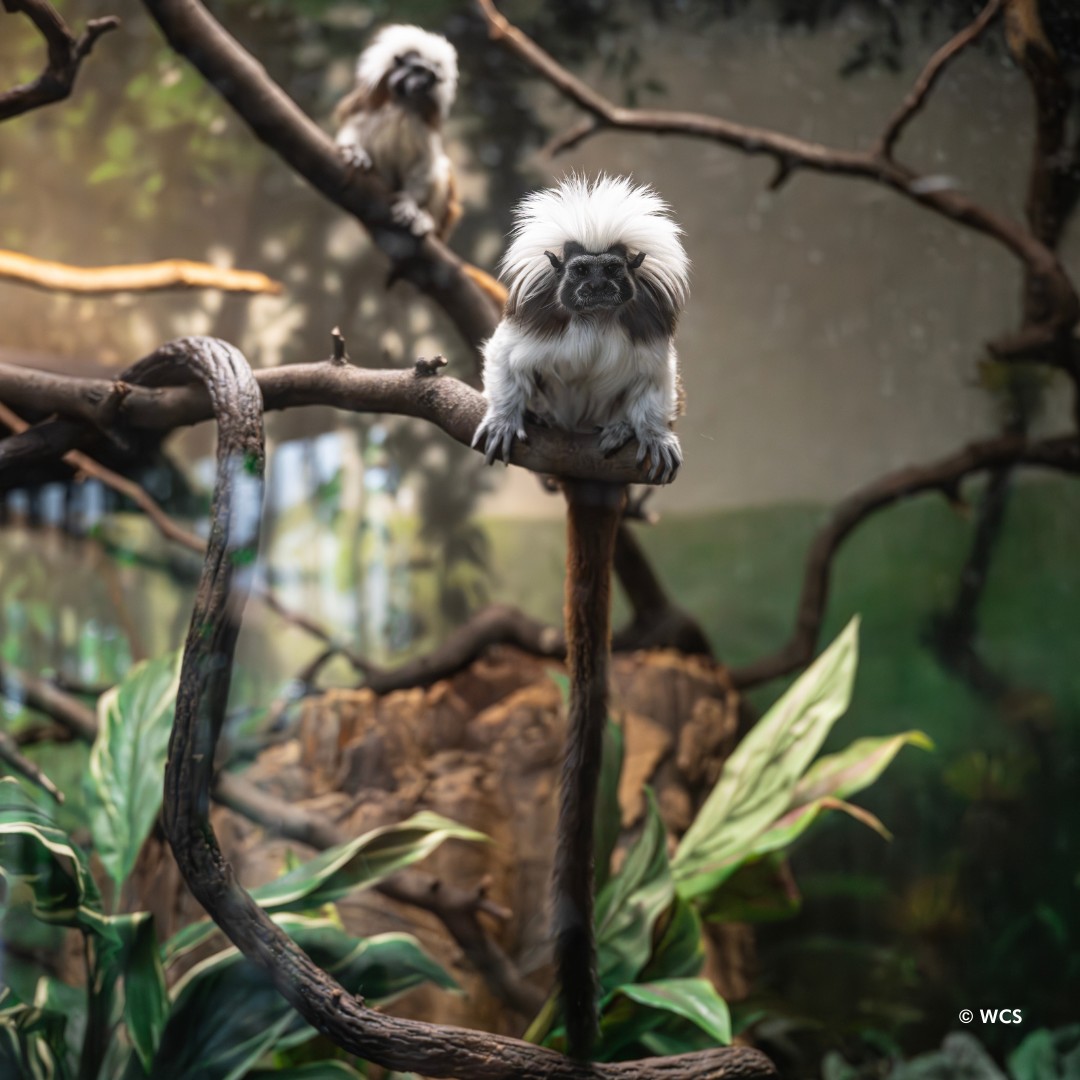- Overview of the cotton-top tamarin, including physical characteristics and conservation status.
- Significance of the Central Park Zoo’s breeding program and its role in species survival.
- The collaborative efforts of the Association of Zoos and Aquariums (AZA) through Species Survival Plans (SSP).
- Insight into the cotton-top tamarin’s natural habitat and behavior.
- Importance of public education and awareness in wildlife conservation efforts.
The cotton-top tamarin, a diminutive primate native to the tropical forests of Colombia, is facing a serious threat of extinction. Measuring approximately 10 inches in length and averaging just over a pound in weight, these tiny creatures are one of the most endangered primates globally. It is estimated that only about 2,000 adults remain in their natural habitat, underscoring the urgency of conservation efforts.
Recognizable by their distinctive crest of white hair, cotton-top tamarins play a pivotal role in the forest ecosystem. They are omnivorous, primarily feeding on fruits, insects, and plant exudates, facilitating seed dispersal, which is critical for forest regeneration. Understanding their ecological role enhances our appreciation of their importance and the efforts needed to protect them.
The recent development at the Central Park Zoo offers a glimmer of hope. This institution is now home to a new breeding pair of cotton-top tamarins. The female, originally from the zoo, has been paired with a male from an accredited zoo in Kansas. This pairing is more than just a zoo attraction; it is part of a carefully managed breeding strategy.
The Species Survival Plan (SSP) of the Association of Zoos and Aquariums (AZA) oversees these arrangements. These plans are integral to the conservation strategy as they aim to maintain genetic diversity and demographic stability within captive populations. By coordinating breeding programs among AZA-accredited facilities, the SSP hopes to ensure a viable population of cotton-top tamarins for future generations.
Central Park Zoo’s collaboration with these plans exemplifies the critical role zoos can play in conservation. Beyond providing a sanctuary for individual animals, zoos are centers for research, education, and advocacy. The presence of cotton-top tamarins at the zoo not only supports scientific efforts but also engages the public in conservation dialogue.
Understanding the nuances of the tamarin’s natural environment is crucial to replicating it in captivity. These primates thrive in tropical forest canopies, an area that provides both safety from predators and access to food resources. Such habitats are increasingly endangered due to deforestation and human encroachment, which adds pressure on the species’ survival in the wild.
Behaviorally, cotton-top tamarins are social animals, living in groups that range from two to nine individuals. They demonstrate complex social structures and communication systems, relying on vocalizations, gestures, and facial expressions. These dynamics present both challenges and opportunities for animal care specialists working with them in controlled environments.
Public education and awareness are essential components of wildlife conservation. By introducing visitors to cotton-top tamarins, facilities like the Central Park Zoo raise awareness about the threats these animals face and inspire action. Educational programs and interactive exhibits can foster a connection between the public and these primates, encouraging conservation beyond the zoo’s walls.
Conservation is not solely the task of zoological institutions. It requires global engagement and policy action to address issues like habitat destruction and climate change. Encouraging sustainable practices and supporting conservation organizations can make a significant difference.
In summary, the plight of the cotton-top tamarin calls for informed efforts and collaborative action. Whether through breeding programs, educational initiatives, or broader conservation strategies, each step contributes to the survival of this remarkable species. Through understanding and action, there is hope that future generations will also enjoy the vibrant presence of cotton-top tamarins in our world.
*****
Source Description
Tiny cotton-top tamarins are around 10 inches long and weigh a little more than a pound on average. They are one of the most endangered primates in the world. It is estimated just 2,000 adults remain in the wild.
But there is some good news! We have a new breeding pair of cotton-top tamarins at the Central Park Zoo. Our female was born at the zoo a few years ago, and she was recently paired with a new male that came to us from an accredited zoo in Kansas. This pairing was recommended by the Cotton-top Tamarin Species Survival Plan (SSP) of the Association of Zoos and Aquariums (AZA). Species survival plans are cooperatively managed breeding programs involving AZA-accredited zoos and aquariums that focus on maintaining genetically diverse populations for select species. You can see these diminutive New World primates in our Tropic Zone exhibit.
📸: WCS photographer, Terria Clay


